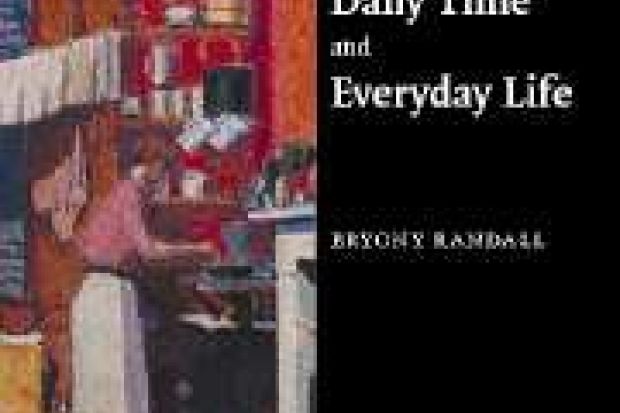This book is about the kind of attention paid to "dailyness" and everyday life in the work of four women modernist writers: Dorothy Richardson, Gertrude Stein, H.D. (Hilda Doolittle) and Virginia Woolf. The argument, as Bryony Randall encapsulates it in her final paragraph, is that all these writers "grapple with a dominant ideology that knows the power of manipulating time, of making individuals 'isolated, separated, and inhabit time as disempowered' (sic)".
It might have been illuminating. But the book is poorly written, spurious adverbs such as "radically" and "precisely" punctuate almost every page, and the argument is more gestural than real.
One of the worst consequences of the research assessment exercise-driven culture has been to encourage reliance on prepackaged ideas and sponsor a proliferation of "readers" and "guides".
The idea of "everyday life" itself is no exception, and many ideas here seem to have been acquired second-hand, while complex areas such as phenomenology, Marxist economics and ideology critique are reduced to caricatures in the introductory chapter.
There, Randall argues that women's writing can present a "structural challenge" to the insufficiently gender-aware Marxist tradition by virtue of the attention paid to the everyday and the everyday as itself a form of attention.
It's a nice idea, and the project's heart seems to be in the right place. Randall makes good use of some of the critics she cites - Jonathan Crary's work on attention and distraction, for example. But why begin with Henri Bergson and William James? There's nothing new here: Bergson emerges as privileging the aesthetic without pondering its class base; James's work is similarly marked by cultural assumptions.
Next, Dorothy Richardson, whose 13-volume novel Pilgrimage offers plenty of dailyness and everydayness. Randall focuses on the chronotopic presentation and description of temporal markers, and has all the necessary material for an interesting reading but gets caught up in parallels between Richardson and Bergson (or Deleuze's Bergson), which lead to unconvincing readings of micro-passages as evidence of the ways in which days can articulate "that dailiness in general in which human temporality consists".
Gertrude Stein's work, though discrete, is even more substantial than Richardson's, but here Randall restricts her analysis to "Melanctha" in Three Lives and one very brief extract ("A Table") from Tender Buttons.
Randall doesn't make her own arguments: she repeats and critiques other people's to delineate her own position. With Tender Buttons, this involves the claim that its everyday attentiveness involves an empowered relationship with time, and an approach to its non-representational language that seems ignorant of poetry. Neither the chapter on H.D., which allows for the obligatory treatment of the First World War, and shows that the everyday can be traumatic, nor the one on Woolf, adds substantially to the argument.
Throughout the book, Randall accepts too much at face value, defers unduly to "authorities", especially to an account of everyday life that has already lost most of what sharpness it may once have had, and despite her claims to the contrary signally fails to reanimate what ought to be unpredictable, revealing and exciting but in this unnecessary book is merely dutiful, deferential and dull.
Modernism, Daily Time and Everyday Life
By Bryony Randall
Cambridge University Press 232pp, £45.00
ISBN 9780521879842
Published 13 December 2007
Register to continue
Why register?
- Registration is free and only takes a moment
- Once registered, you can read 3 articles a month
- Sign up for our newsletter
Subscribe
Or subscribe for unlimited access to:
- Unlimited access to news, views, insights & reviews
- Digital editions
- Digital access to THE’s university and college rankings analysis
Already registered or a current subscriber?




